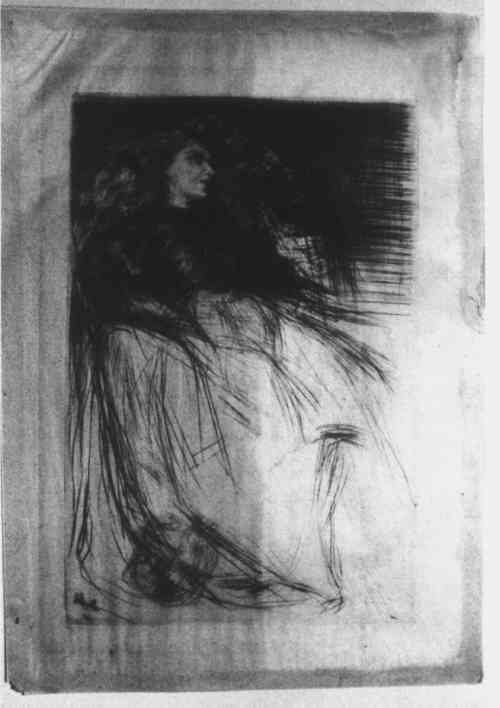THE TREATMENT OF THREE PRINTS BY WHISTLER ON FINE JAPANESE TISSUEShelley Fletcher, & Judith Walsh
1 TreatmentWEARY was the first of the Whistler prints to be treated: its tissue support was the least fragile of the three. Ruled cuts with a fresh scalpel blade were made into the cardboard around the print approximately one-quarter inch from the tissue. By inserting a micro-spatula and later a thin bone folder under the paper facing of the board, the scored portion of the paper facing bearing the print was completely removed from the board. With the print face down on a clean blotter, the paper facing was carefully torn away from the reverse of the print. Some of the remnants of the facing paper and adhesive were removed from the edges with local applications of ethanol and water. The print was then floated on deionized water to relax the draws and release the residual bits of paper and adhesive. Prior to its removal from the cardboard, the print appeared to have been badly light-struck. However, most of the discoloration noted had occurred on the paper
Upon removal from the water bath the print was drained and partially air dried. It was then placed between felts and under light weights for two days. The paper dried with many tiny puckers overall, and when removed from the felts and allowed to relax, many large cockles appeared across the corners. These were attributed to adhesive residues around the edges of the tissue; they were quite distracting. |
